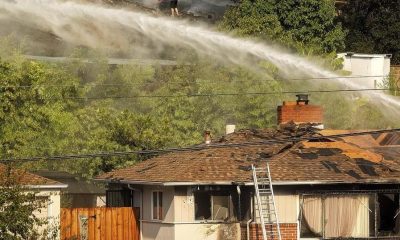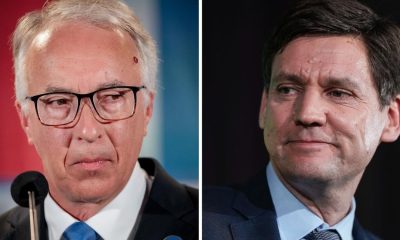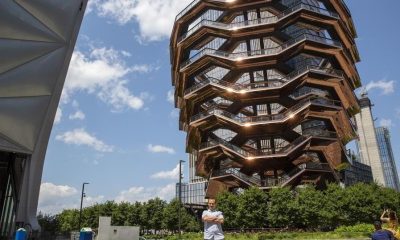“There’s no place in America for this kind of violence,” President Joe Biden said on Saturday, following the shooting at a Donald Trump rally in Pennsylvania that left the former president hurt and killed an audience member.
Politics
Are assassination attempts getting more common?
But the fact is, this type of violence has a long history in American politics: Four US presidents have been killed in office and virtually all of them, in the modern era, have been targeted by assassination plots of varying levels of seriousness.
Along with the general atmosphere of political turmoil of recent years — Trump himself, Covid, police violence and the resulting protests, January 6 — attacks targeting public officials of both parties in the US also seem to be becoming more common.
Recent examples include the 2017 shooting by a left-wing extremist at a Republican Congressional baseball practice that critically injured Rep. Steve Scalise; the Donald Trump supporter who sent mail bombs to more than a dozen prominent Democrats in 2018; a right-wing militia’s plot to kidnap Michigan Gov. Gretchen Whitmer in 2020; the abortion rights supporter who attempted to kill Supreme Court Justice Brett Kavanaugh at this home in 2022; and the QAnon adherent who attacked Paul Pelosi, husband of House Speaker Nancy Pelosi, while attempting to target her, in 2022.
That violence is having a clear impact on how American politics is conducted. Spending on security by House and Senate campaigns increased by 500 percent between 2020 and 2022, according to the Washington Post.
Nor is this just an American phenomenon: There’s been a global wave of recent assassinations as well. The UK has seen two members of parliament killed in recent years: Jo Cox, a Labour MP murdered by a right-wing extremist days before the Brexit vote in 2016, and David Amess, a Conservative MP fatally stabbed by an Islamic State supporter in 2021. Former Brazilian President Jair Bolsonaro survived a stabbing during his campaign for president in 2018. In 2021, Haitian Prime Minister Jovenel Moïse was assassinated by mercenaries.
Last year saw the killing of Ecuadorian presidential candidate Fernando Villavicencio, and former Japanese Prime Minister Shinzo Abe. In January of this year, South Korean opposition leader Lee Jae-myung survived being stabbed in the neck, while Slovakian Prime Minister Robert Fico was shot and nearly killed in May. In Mexico, where political violence is rampant on a scale far beyond most other countries, at least 36 candidates seeking offices throughout the country were killed ahead of the country’s recent elections, according to the New York Times.
Then there are the numerous alleged plots targeting Ukrainian President Volodymyr Zelenskyy since Russia’s full-scale invasion of Ukraine.
The growing threat of assassination
Despite all that, it’s difficult to say for sure if political killings are on the rise. There’s a data problem: Assassinations are still relatively rare compared to other forms of political violence — violent protests, terrorist bombings — and attempts that succeed in killing their target, or even come close enough to succeeding, are even rarer.
But there is some data to suggest they’re getting more common. According to the University of Maryland’s Global Terrorism Database, which includes incidents of political violence from 1970 to 2020, the number of assassination incidents around the world fell dramatically from more than a thousand per year in the early 1990s to less than 100 per year in 1999, then started to creep up again, jumping to more than 900 in 2015. This trend has roughly corresponded with a global uptick in international armed conflict, which also dipped through the 1990s before rising more recently.
Threatened acts of violence have increased even faster. In the United States, the Capitol Police reported 9,625 threats against members of Congress in 2021, compared to just 3,939 in 2017.
What could be driving this trend? Political violence researcher Rachel Kleinfeld of the Carnegie Endowment for International Peace argues that political violence, including assassinations, becomes more common in countries where there are highly competitive elections that could shift the balance of power, where partisan politics becomes a dominant social identity, and where there are weak institutional constraints on violence. All of those reasons fit the US now, which is why Kleinfeld suggests the country is particularly vulnerable to a surge in political violence.
Kleinfeld also notes that a difference between today’s political violence and previous periods where it was common — such as the 1970s, the high point of terrorist violence within the US with more than 1,470 attacks compared to 214 in the decade following 9/11 — is that today’s perpetrators are more likely to not belong to any formal organization, but rather to self-radicalize via online engagement.
The Georgetown University terrorism researchers Bruce Hoffman and Jacob Ware argued in an article published two years ago that political assassination is becoming more common around the world in part to the emergence of so-called “accelerationism” — the deliberate effort to foment political chaos or societal collapse in order to accelerate political transformation — as a more prominent strategy for extremists. They write, “For extremists seeking to sow chaos and speed up some cataclysmic societal collapse, high-profile politicians provide an attractive target” because they personify the political order these extremists are trying to tear down.
Previous waves of political violence happened in eras when security was more lax and politicians more accessible. Think of John F. Kennedy’s open motorcade in Dallas, which no president would think of doing today. But Hoffman and Ware also note that even as politicians and governments invest more in security, new technologies are making assassination attempts easier. Consider the homemade gun used to kill Abe, which the assassin put together with parts and instructions he found online, or the attempted assassination of Venezuelan President Nicolás Maduro using explosive drones in 2018.
In an email to Vox, Hoffman said that the attempt on Trump “does fit into the trend … where attacks on elected officials are becoming more commonplace and, dare one say, even accepted as a norm in our politically polarized/divided country.”
What comes next
Political violence is a phenomenon that tends to feed on itself. Attacks create justifications for more attacks, leading to long periods of violence, such as Italy’s infamous “years of lead,” from the late ’60s through the ’80s, when assassinations, kidnappings, and bombings by right-wing and left-wing extremist groups were disturbingly common.
Another very inconvenient fact about political assassinations is that when successful, they often accomplish their political goals, if not always in ways the assassin might intend: The murder of Abraham Lincoln and his replacement by pro-states rights Southerner Andrew Johnson utterly changed the course of post-Civil War Reconstruction. The right-wing Israeli who killed Prime Minister Yitzhak Rabin in 1995, in the wake of the historic Oslo Accords, dealt a serious, perhaps fatal, blow to the Israeli-Palestinian peace process. The killing of Abe led to a dramatic political reckoning in Japan with the assassin’s primary target: the controversial Unification Church.
We still don’t know the specific motivations of the shooter who attempted to kill Trump, or what impact the event will have on the upcoming election or American politics generally. But it’s safe to say the impact, whatever the gunman’s intentions, would have been far greater if he had adjusted his aim by just a few inches.
When the stakes of political contests start to seem existential, and political violence of all kinds more permissible, an increase in assassination attempts — in the US and abroad — seems almost inevitable.

Politics
Harris tells Black churchgoers that people must show compassion and respect in their lives
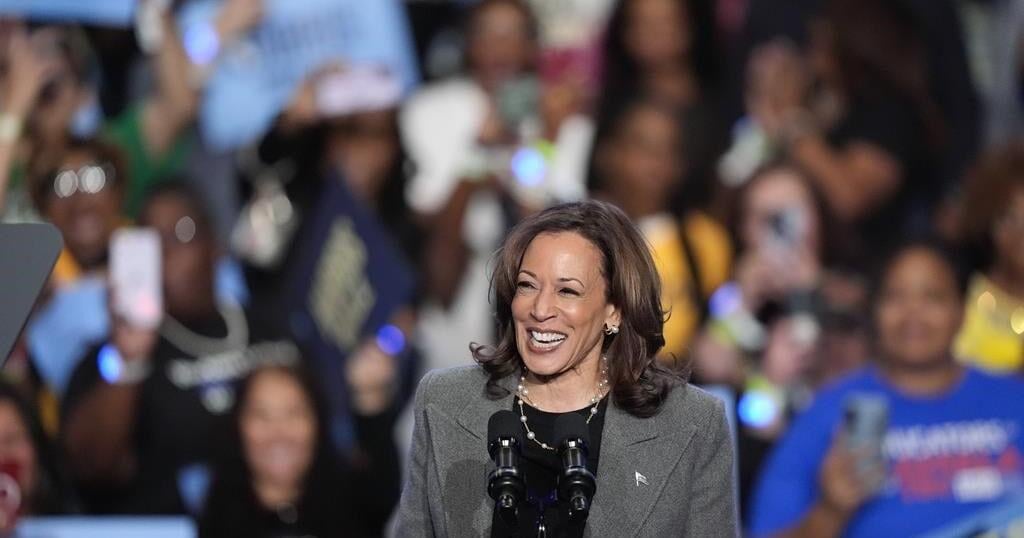
STONECREST, Ga. (AP) — Kamala Harris told the congregation of a large Black church in suburban Atlanta on Sunday that people must show compassion and respect in their daily lives and do more than just “preach the values.”
The Democratic presidential nominee’s visit to New Birth Missionary Baptist Church in Stonecrest on her 60th birthday, marked by a song by the congregation, was part of a broad, nationwide campaign, known as “Souls to the Polls,” that encourages Black churchgoers to vote.
Pastor Jamal Bryant said the vice president was “an American hero, the voice of the future” and “our fearless leader.” He also used his sermon to welcome the idea of America electing a woman for the first time as president. “It takes a real man to support a real woman,” Bryant said.
“When Black women roll up their sleeves, then society has got to change,” the pastor said.
Harris told the parable of the Good Samaritan from the Gospel of Luke, about a man who was traveling from Jerusalem to Jericho and was attacked by robbers. The traveler was beaten and left bloodied, but helped by a stranger.
All faiths promote the idea of loving thy neighbor, Harris said, but far harder to achieve is truly loving a stranger as if that person were a neighbor.
“In this moment, across our nation, what we do see are some who try to deepen division among us, spread hate, sow fear and cause chaos,” Harris told the congregation. “The true measure of the strength of a leader is based on who you lift up.”
She was more somber than during her political rallies, stressing that real faith means defending humanity. She said the Samaritan parable reminds people that “it is not enough to preach the values of compassion and respect. We must live them.”
Harris ended by saying, “Weeping may endure for a night, but joy cometh in the morning,” as attendees applauded her.
Many in attendance wore pink to promote breast cancer awareness. Also on hand was Opal Lee, an activist in the movement to make Juneteenth a federally recognized holiday. Harris hugged her.
The vice president also has a midday stop at Divine Faith Ministries International in Jonesboro with singer Stevie Wonder, before taping an interview with the Rev. Al Sharpton that will air later Sunday on MSNBC. The schedule reflects her campaign’s push to treat every voting group like a swing state voter, trying to appeal to them all in a tightly contested election with early voting in progress.
Harris’ running mate, Minnesota Gov. Tim Walz, headed to church in Saginaw, Michigan, and his wife, Gwen, was going to a service in Las Vegas.
The “Souls to the Polls” effort launched last week and is led by the National Advisory Board of Black Faith Leaders, which is sending representatives across battleground states as early voting begins in the Nov. 5 election.
“My father used to say, a ‘voteless people is a powerless people’ and one of the most important steps we can take is that short step to the ballot box,” Martin Luther King III said Friday. “When Black voters are organized and engaged, we have the power to shift the trajectory of this nation.”
On Saturday, the vice president rallied supporters in Detroit with singer Lizzo before traveling to Atlanta to focus on abortion rights, highlighting the death of a Georgia mother amid the state’s restrictive abortion laws that took effect after the U.S. Supreme Court, with three justices nominated by Donald Trump, overturned Roe v. Wade.
And after her Sunday push, she will campaign with former U.S. Rep. Liz Cheney, R-Wyo., in the suburbs of Pennsylvania, Michigan, and Wisconsin.
“Donald Trump still refuses to take accountability, to take any accountability, for the pain and the suffering he has caused,” Harris said.
Harris is a Baptist whose husband, Doug Emhoff, is Jewish. She has said she’s inspired by the work of the Rev. Martin Luther King Jr., and influenced by the religious traditions of her mother’s native India as well as the Black Church. Harris sang in the choir as a child at Twenty Third Avenue Church of God in Oakland.
“Souls to the Polls” as an idea traces back to the Civil Rights Movement. The Rev. George Lee, a Black entrepreneur from Mississippi, was killed by white supremacists in 1955 after he helped nearly 100 Black residents register to vote in the town of Belzoni. The cemetery where Lee is buried has served as a polling place.
Black church congregations across the country have undertaken get-out-the-vote campaigns for years. In part to counteract voter suppression tactics that date back to the Jim Crow era, early voting in the Black community is stressed from pulpits nearly as much as it is by candidates.
In Georgia, early voting began on Tuesday, and more than 310,000 people voted on that day, more than doubling the first-day total in 2020. A record 5 million people voted in the 2020 presidential election in Georgia.
___
This story has been corrected to reflect that the mobilization effort launched last week, not Oct. 20.
Politics
NDP and B.C. Conservatives locked in tight battle after rain-drenched election day

VANCOUVER – Predictions of a close election were holding true in British Columbia on Saturday, with early returns showing the New Democrats and the B.C. Conservatives locked in a tight battle.
Both NDP Leader David Eby and Conservative Leader John Rustad retained their seats, while Green Leader Sonia Furstenau lost to the NDP’s Grace Lore after switching ridings to Victoria-Beacon Hill.
However, the Greens retained their place in the legislature after Rob Botterell won in Saanich North and the Islands, previously occupied by party colleague Adam Olsen, who did not seek re-election.
It was a rain-drenched election day in much of the province.
Voters braved high winds and torrential downpours brought by an atmospheric river weather system that forced closures of several polling stations due to power outages.
Residents faced a choice for the next government that would have seemed unthinkable just a few months ago, between the incumbent New Democrats led by Eby and Rustad’s B.C. Conservatives, who received less than two per cent of the vote last election
Among the winners were the NDP’s Housing Minister Ravi Kahlon in Delta North and Attorney General Niki Sharma in Vancouver-Hastings, as well as the Conservatives Bruce Banman in Abbotsford South and Brent Chapman in Surrey South.
Chapman had been heavily criticized during the campaign for an old social media post that called Palestinian children “inbred” and “time bombs.”
Results came in quickly, as promised by Elections BC, with electronic vote tabulation being used provincewide for the first time.
The election authority expected the count would be “substantially complete” by 9 p.m., one hour after the close of polls.
Six new seats have been added since the last provincial election, and to win a majority, a party must secure 47 seats in the 93-seat legislature.
There had already been a big turnout before election day on Saturday, with more than a million advance votes cast, representing more than 28 per cent of valid voters and smashing the previous record for early polling.
The wild weather on election day was appropriate for such a tumultuous campaign.
Once considered a fringe player in provincial politics, the B.C. Conservatives stand on the brink of forming government or becoming the official Opposition.
Rustad’s unlikely rise came after he was thrown out of the Opposition, then known as the BC Liberals, joined the Conservatives as leader, and steered them to a level of popularity that led to the collapse of his old party, now called BC United — all in just two years.
Rustad shared a photo on social media Saturday showing himself smiling and walking with his wife at a voting station, with a message saying, “This is the first time Kim and I have voted for the Conservative Party of BC!”
Eby, who voted earlier in the week, posted a message on social media Saturday telling voters to “grab an umbrella and stay safe.”
Two voting sites in Cariboo-Chilcotin in the B.C. Interior and one in Maple Ridge in the Lower Mainland were closed due to power cuts, Elections BC said, while several sites in Kamloops, Langley and Port Moody, as well as on Hornby, Denman and Mayne islands, were temporarily shut but reopened by mid-afternoon.
Some former BC United MLAs running as Independents were defeated, with Karin Kirkpatrick, Dan Davies, Coralee Oakes and Tom Shypitka all losing to Conservatives.
Kirkpatrick had said in a statement before the results came in that her campaign had been in touch with Elections BC about the risk of weather-related disruptions, and was told that voting tabulation machines have battery power for four hours in the event of an outage.
— With files from Brenna Owen
This report by The Canadian Press was first published Oct. 19, 2024.
The Canadian Press. All rights reserved.
Politics
Breakingnews: B.C. Conservative Leader John Rustad elected in his riding
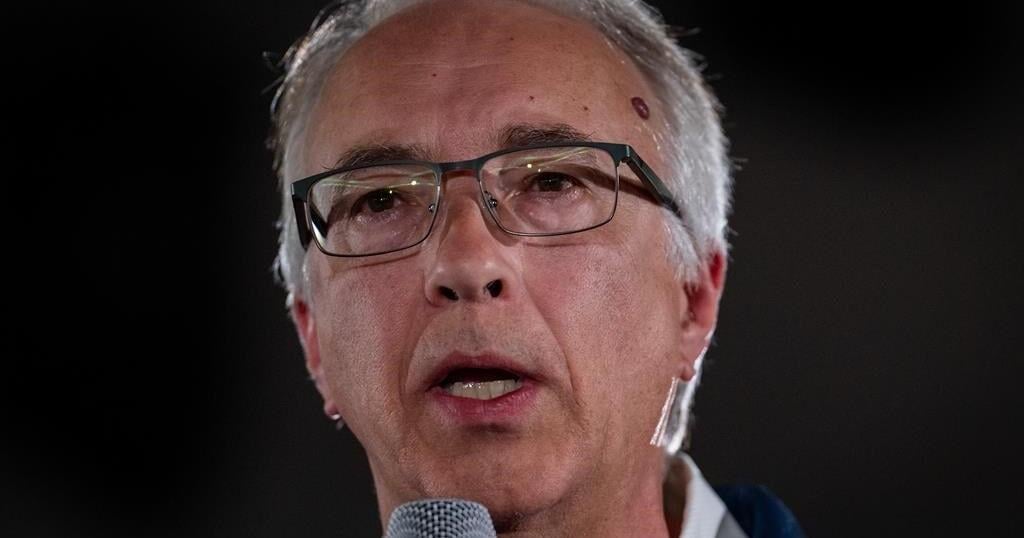
VANDERHOOF, B.C. – British Columbia Conservative Leader John Rustad has been re-elected in his riding of Nechako Lakes.
Rustad was kicked out of the Opposition BC United Party for his support on social media of an outspoken climate change critic in 2022, and last year was acclaimed as the B.C. Conservative leader.
Buoyed by the BC United party suspending its campaign, and the popularity of Pierre Poilievre’s federal Conservatives, Rustad led his party into contention in the provincial election.
The Canadian Press. All rights reserved.
-

 News12 hours ago
News12 hours agoCalmer weather helps contain Oakland, California, fire that forced evacuations
-

 News12 hours ago
News12 hours agoIsrael says it will target Hezbollah’s financial arm and begins striking Beirut
-

 News17 hours ago
News17 hours agoBC NDP, Conservatives in tight fight to the finish, with no clear winner in B.C. election |
-

 News12 hours ago
News12 hours agoIn one portrait, an AP Photographer tells the story of how difficult the job of a miner is
-

 News12 hours ago
News12 hours agoGeorgia authorities investigating a dock gangway collapse that killed 7 on a historic island
-

 Politics18 hours ago
Politics18 hours agoHarris tells Black churchgoers that people must show compassion and respect in their lives
-

 News12 hours ago
News12 hours ago2 Navy aviators are declared dead after a fighter jet crashed in Washington state
-

 News18 hours ago
News18 hours agoThe Vessel, a Manhattan tourist site closed after suicides, reopens with new safety features















